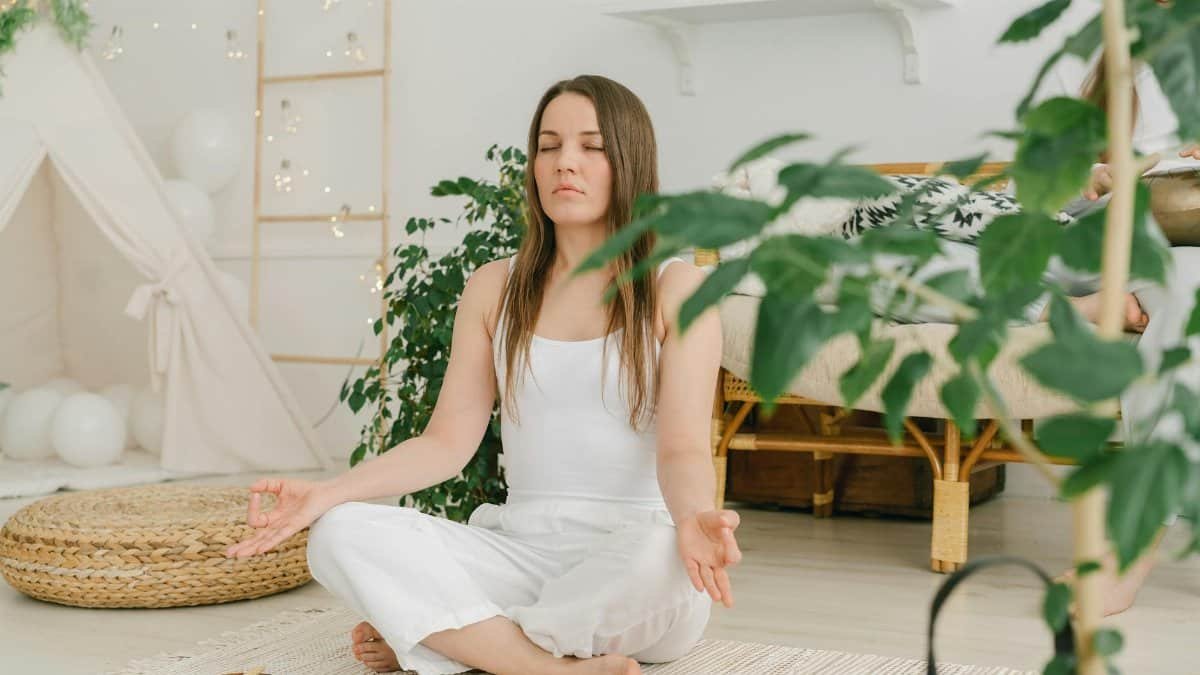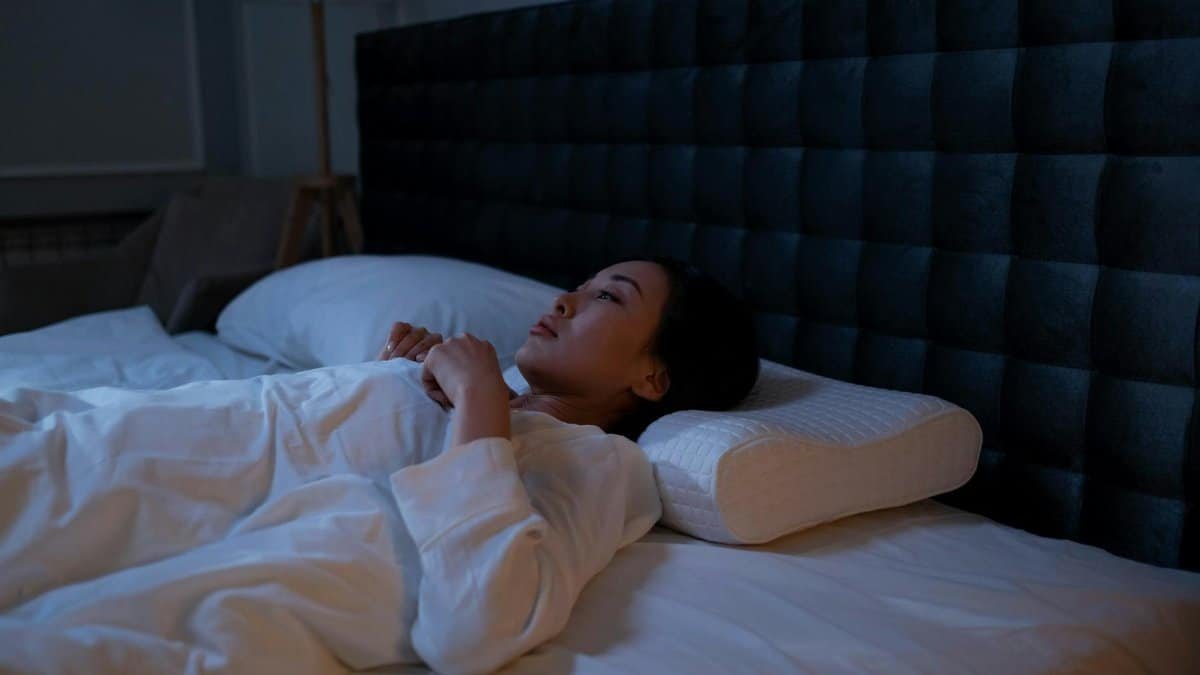In a world where screens glow late into the night and worries whirl like a never-ending storm, what if the key to reclaiming restful sleep lay in something as simple as a few targeted meditation hacks? Millions of Americans grapple with insomnia, tossing through sleepless hours that drain their days. Yet emerging trends in 2025 point to a quiet revolution: people are turning to these practical techniques, blending ancient mindfulness with modern science, to hack their way to better slumber. Far from esoteric rituals, meditation hacks for sleep are accessible tools that anyone can try, often requiring just minutes before bed. They address the root causes of restlessness, from racing thoughts to physical tension, promising not just quicker sleep onset but deeper, more restorative rest. As stress levels rise in our fast-paced society, these strategies offer a beacon of hope, backed by growing research from health experts.
1. Embrace the Body Scan for Tension Release

Start with something straightforward. Lie down in bed, close your eyes, and slowly direct your attention from your toes upward. This body scan meditation hack invites you to notice sensations without judgment. Feel the weight of your feet against the mattress. Move to your calves, then thighs, observing any tightness. It’s like a mental inventory, uncovering hidden stress that keeps sleep at bay.
Picture a busy parent in Chicago, juggling work calls and family dinners. By bedtime, her mind buzzes. She tries the scan one night, lingering on her shoulders where the day’s load sits heavy. Gradually, the knots loosen. It’s not magic; it’s awareness in action. Research supports this. A study from the National Institutes of Health highlights how body scans reduce anxiety, paving the way for sleep.NCCIH on Meditation Benefits.
But vary the pace. Sometimes, rush through it, and it feels mechanical. Take time to breathe into each area. In 2025, with remote work blurring boundaries, this hack gains traction among professionals seeking quick resets. One anonymous online account shared feeling “like a new person” after incorporating it, turning fragmented nights into solid rest. Yet, it’s not foolproof. If distractions pull you away, gently return. The beauty lies in its flexibility—no apps required, though many exist for guidance.
Transition to practice: Set a timer for five minutes initially. Build from there. Over weeks, notice patterns. Maybe your jaw clenches from unspoken frustrations. Releasing it signals your body it’s time to unwind. This isn’t just about sleep; it’s reclaiming control over your internal world.
2. Master the 4-7-8 Breathing Technique to End Insomnia

Dive right into the powerhouse. This meditation hack, popularized by Dr. Andrew Weil, promises to quiet the mind in moments. Inhale quietly through your nose for four counts. Hold for seven. Exhale through your mouth for eight, making a whooshing sound. Repeat four times. Simple, yet it flips the switch on insomnia.
Why does it work? It activates the parasympathetic nervous system, countering the fight-or-flight response that fuels sleeplessness. Imagine a New York accountant, staring at the ceiling at 2 a.m., numbers swirling in his head. He tries 4-7-8, focusing on the breath’s rhythm. Within cycles, his heart rate slows, thoughts fade. It’s like hitting a reset button on overdrive.
Evidence backs it up. Harvard Medical School notes breathing exercises like this improve sleep quality by reducing stress hormones.Harvard Health on Breathing Techniques. In U.S. trends for 2025, with rising reports of insomnia amid economic uncertainties, this hack stands out. A Pew Research survey shows more Americans exploring mindfulness for mental health.Pew Research on Mental Health Trends.
Not every night is perfect. Some find the hold challenging at first, feeling lightheaded. Start seated if needed. Adapt it. One reflective moment: In group discussions, participants often share how it transforms bedtime dread into anticipation. This isn’t a cure-all, but for many, it ends the cycle of insomnia, fostering nights of unbroken peace.
3. Harness Guided Imagery for a Mental Escape

What if your mind could wander to a serene beach instead of replaying tomorrow’s to-do list? Guided imagery, a potent meditation hack, does just that. Visualize a peaceful scene in detail: the warm sand, gentle waves, salty air. Let it envelop you as you prepare for sleep.
Consider a teacher in Texas, overwhelmed by lesson plans and grading. She scripts her imagery—picturing a forest glade, sunlight filtering through leaves. As she breathes deeply, worries dissolve into the scene. It’s storytelling for the subconscious, redirecting focus from chaos to calm.
Studies affirm its impact. The Mayo Clinic reports that such visualization reduces insomnia symptoms by promoting relaxation.Mayo Clinic on Meditation. Amid 2025’s push for self-care in mental health circles, this hack resonates, especially with apps offering narrated guides. Yet, challenges arise. If your imagination falters, start with prompts. Build vividness over time.
Explore variations: Pair it with soft music or scents like lavender. The tension? Not everyone visualizes easily; some prefer tactile elements. Still, it weaves a narrative of rest, turning abstract calm into tangible escape.
4. Practice Mindfulness to Quiet Racing Thoughts

Begin with observation. Mindfulness meditation hacks zero in on the present, acknowledging thoughts without attachment. Sit or lie quietly, note each idea as it arises—”planning dinner”—then let it pass like a cloud.
A vivid snapshot: A Seattle software engineer, plagued by code bugs in his dreams, adopts this. In bed, he labels worries: “Work stress.” They lose power, fading into background noise. Sleep follows naturally.
Backing from science: NIH research links mindfulness to better sleep by lowering rumination.NIH Study on Mindfulness and Sleep. In today’s U.S. landscape, with social media amplifying anxieties, this hack empowers users to reclaim mental space. Online forums buzz with stories of transformation, one describing it as “silencing the inner critic.”
Shift gears: Don’t force emptiness; that’s counterproductive. Embrace the ebb and flow. Over months, it reshapes habits, making bedtime a sanctuary rather than a battleground.
5. Try Progressive Muscle Relaxation for Physical Unwinding

End with a hands-on approach. Tense and release muscle groups sequentially—from fists to forehead. This meditation hack bridges body and mind, easing the physical echoes of a hectic day.
Envision a nurse in Atlanta, on her feet for 12-hour shifts. Exhausted yet wired, she squeezes her toes tight, holds, then lets go. Wave by wave, tension melts. It’s a deliberate unwind, signaling rest.
Credible support: The American Psychological Association endorses it for insomnia relief.APA on Insomnia Treatments. As 2025 sees more emphasis on holistic health, this integrates seamlessly into routines. But nuance: Avoid over-tensing if injured. Listen to your body.
Wrap with reflection: These hacks aren’t isolated; combine them for synergy. In a culture chasing productivity, they remind us sleep is essential, not optional. Experiment, adapt, and discover what quiets your night.
